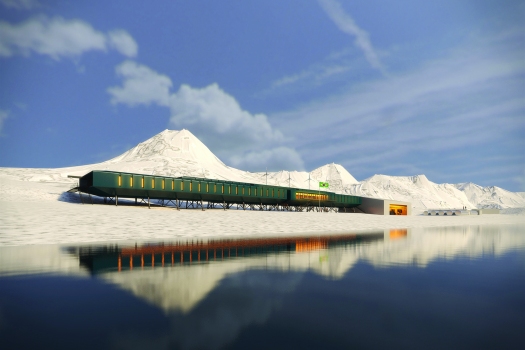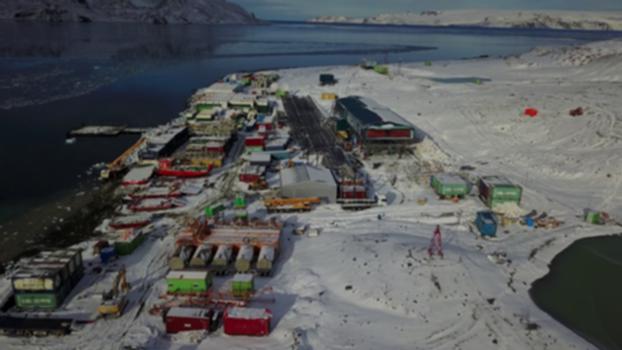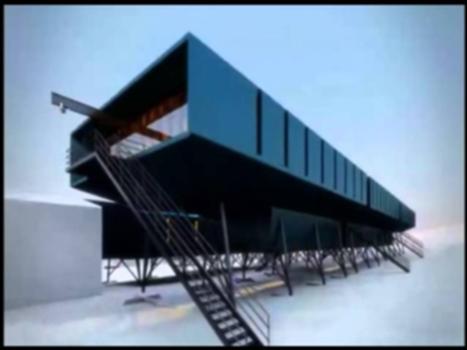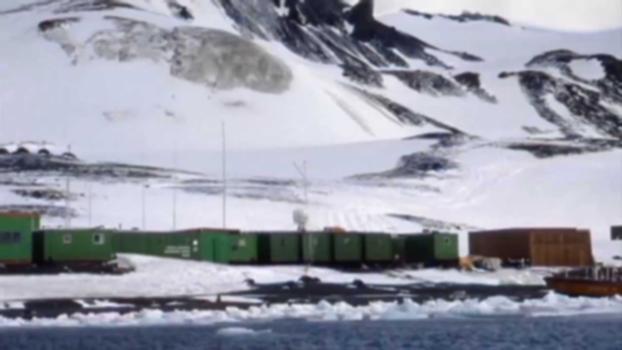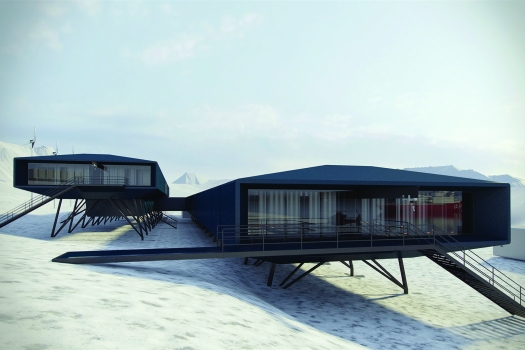General Information
| Name in local language: | Estação Antártica Comandante Ferraz |
|---|---|
| Completion: | January 2020 |
| Status: | in use |
Project Type
| Function / usage: |
Polar research facility |
|---|---|
| Material: |
Steel structure |
Location
| Location: |
King George Island, South Shetland Islands |
|---|---|
| Coordinates: | 62° 5' 0" S 58° 23' 28" W |
Technical Information
Dimensions
| gross floor area | 3 200 m² |
Case Studies and Applied Products

New Antarctic Station insulated from frigid environment using structural thermal breaks
1,000 km south of South America new Comandante Ferraz Antarctic Station is being built at a cost of around 82 million Euro. The Brazilian Navy operates the research outpost on behalf of the Brazilian Science ... [more]
Excerpt from Wikipedia
The Comandante Ferraz Antarctic Station (Portuguese:Estação Antártica Comandante Ferraz) is a permanent Antarctic research station named after the Brazilian Navy Commander Luís Antônio de Carvalho Ferraz, who visited Antarctica many times with the British exploration team and managed to convince his government to create a self-guided Brazilian Antarctic Program.
Located in Admiralty Bay, King George Island, near the tip of the Antarctic Peninsula, 130 km from the South American continent, the station began operating on 6 February 1984, brought to Antarctica in modules by the oceanographic ship Barão de Teffé (H-42) and several other Brazilian naval ships. It now houses about 60 people, including researchers, technicians and staff, military and civilians.
History
The station was named after Navy Commander Luís Antônio de Carvalho Ferraz, a hydrographer and oceanographer who visited Antarctica twice on board of British vessels. He was instrumental in persuading his country's government to develop an Antarctic program, and died suddenly in 1982 while representing Brazil at an oceanographic conference in Halifax.
The station was built on the same site of the old British "Base G", and the weathered wooden structures of the old base made a sharp contrast with the bright green and orange metal structures of the Brazilian station, which was first set up on 6 February 1984. Above the site of the base there is a small cemetery with five crosses: three of them are the graves of British Antarctic Survey (BAS) personnel; the fourth commemorates a BAS base leader lost at sea, and the fifth cross is the grave of a Brazilian radio operator sergeant who died of a heart attack in 1990.
2012 fire
On 25 February 2012, an explosion in the machine room that housed the station's generators ignited a fire that, according to the Brazilian navy, destroyed approximately 70% of the complex. Two soldiers, originally reported as missing by the Brazilian navy, were found dead in the debris of the station after the fire, while a third one sustained non-life-threatening injuries. Material damage to the base was calculated at US$12.4 million. At the time of the incident, the Brazilian government estimated it would take two years to rebuild the research station.
In August 2012, the station was fully dismantled, with approximately 800 tonnes of debris being shipped back to Brazil. The Brazilian government released U$20 million for the construction of 1,000 square metres (11,000 sq ft) of emergency modules to temporarily house researchers until a permanent station is rebuilt. The construction of the temporary station was completed in May 2013.
On 15 April 2013, the Brazilian Navy announced it had chosen the winning design for the new Comandante Ferraz base. The winning proposal went to the Curitiba-based Estúdio 41 architecture firm. The new station will have 3,200 square metres (34,000 sq ft) and will accommodate 64 people. The cost of the project is approximately US$ 100 million. The station is expected to be operational by 2018.
Climate
With all 12 months having an average temperature below 10° C (50° F), Comandante Ferraz Antarctic Station features a tundra climate (Köppen ET). The average temperature at the station is of about -1.8 °C, however in the region of the Thiel Mountains, where the new station Criosfera 1 was built, the temperature may drop to -35 °C.
Activity
The main objective of the Brazilian Antarctic program lies on climate change research, such as global warming, the greenhouse effect, ozone depletion and the raising level of the oceans. The personnel working at the station collect samples of pollutants which often come from overseas. They also carry out research in meteorology, continental and marine geology, oceanography, astrophysics, geomagnetism, and nuclear geophysics.
Text imported from Wikipedia article "Comandante Ferraz Antarctic Station" and modified on July 23, 2019 according to the CC-BY-SA 4.0 International license.
Participants
-
afaconsult
- Rui Furtado (structural engineer)
Relevant Web Sites
- About this
data sheet - Structure-ID
20076393 - Published on:
16/11/2018 - Last updated on:
09/03/2021

